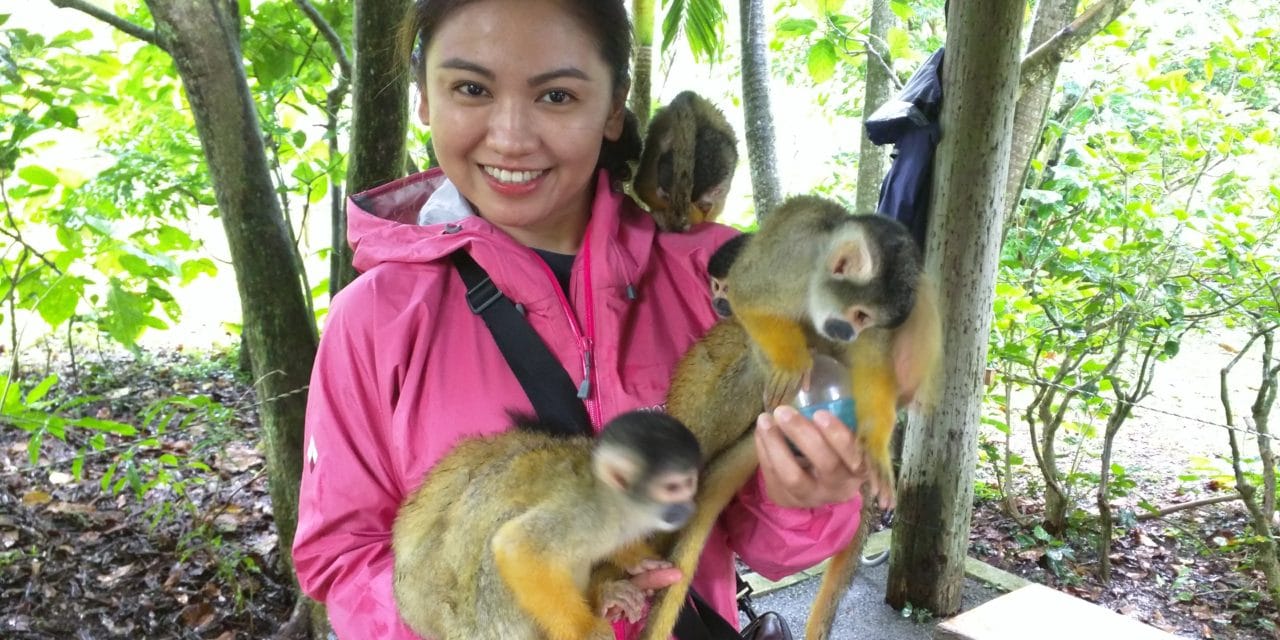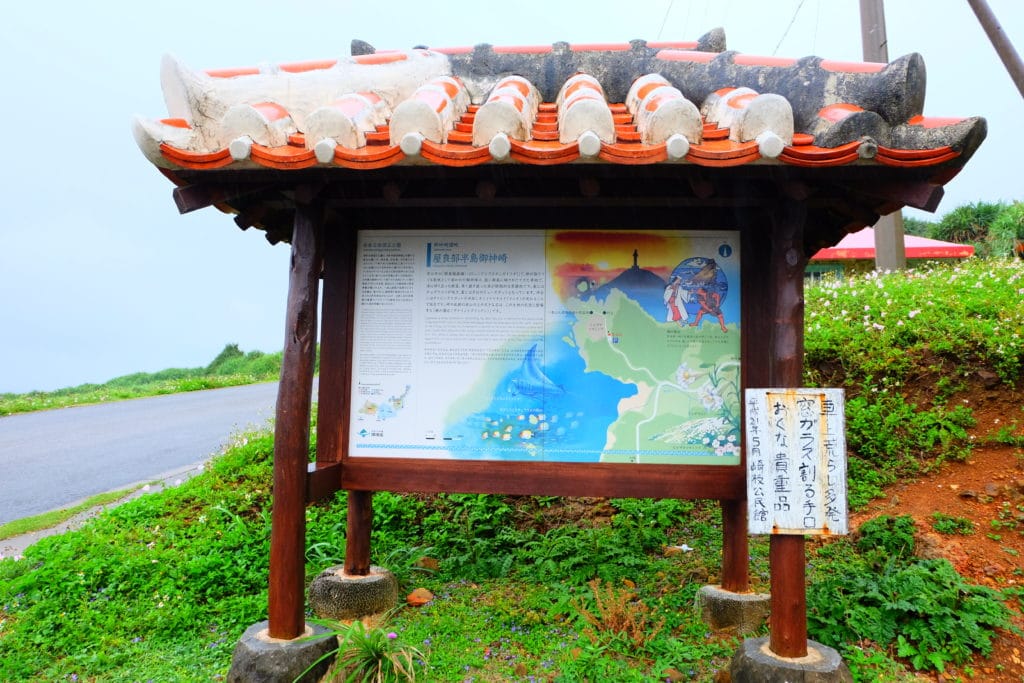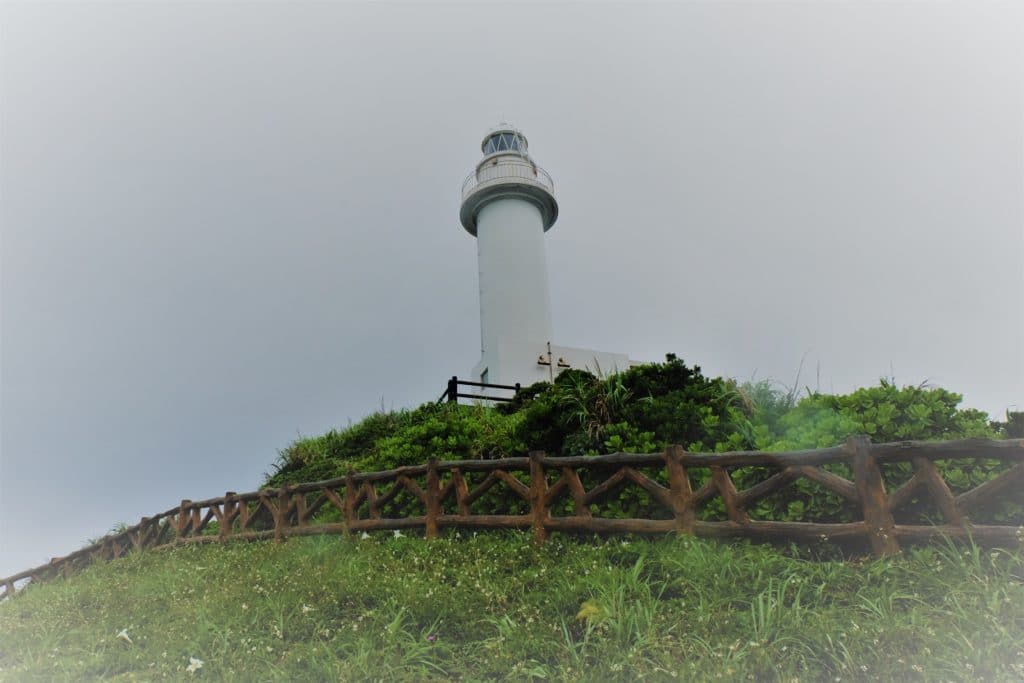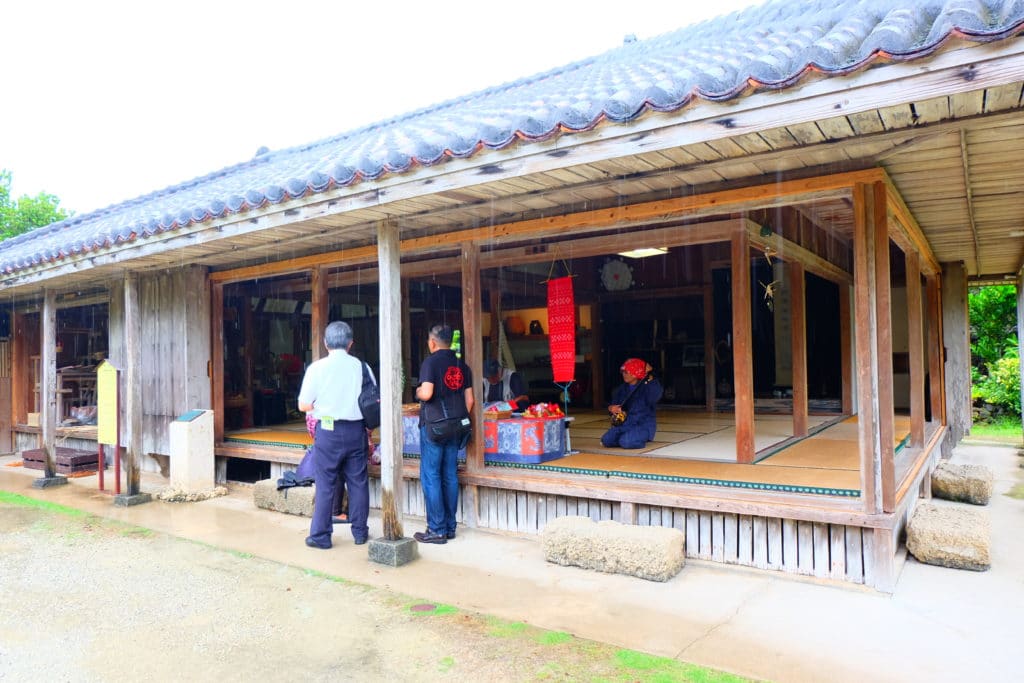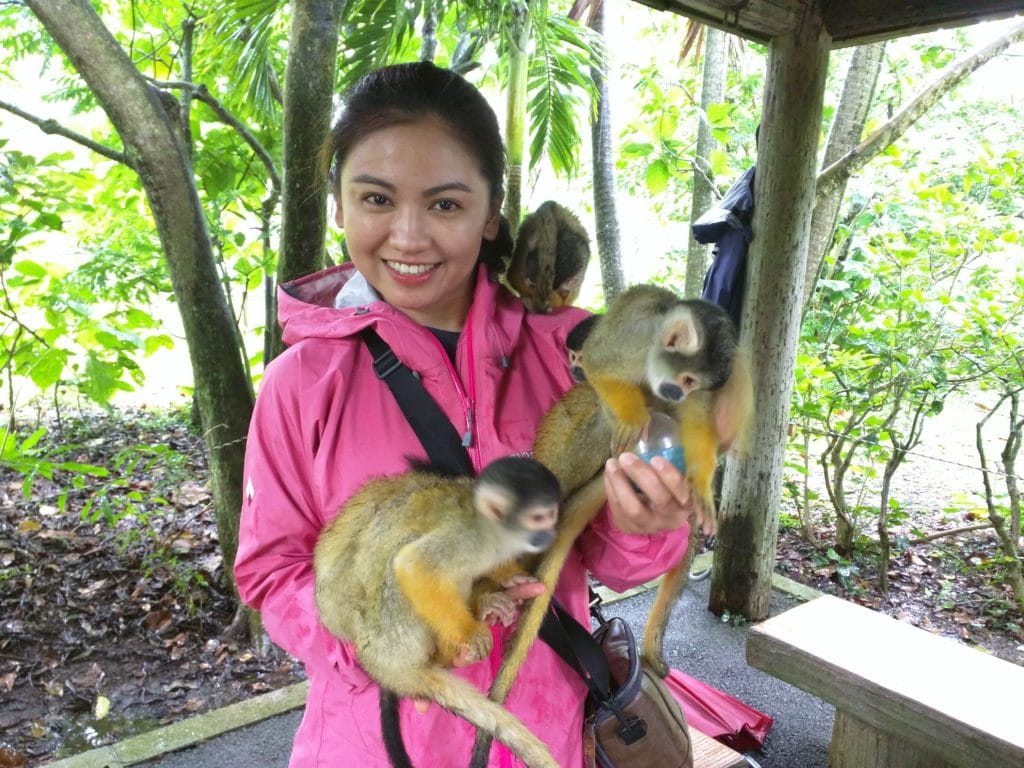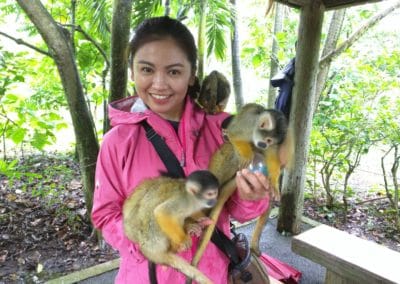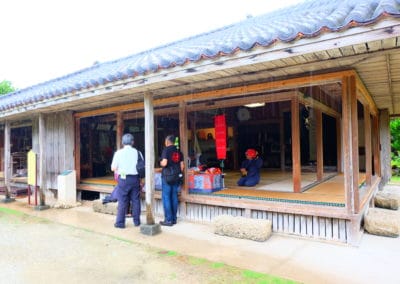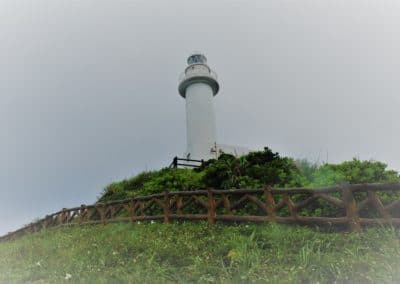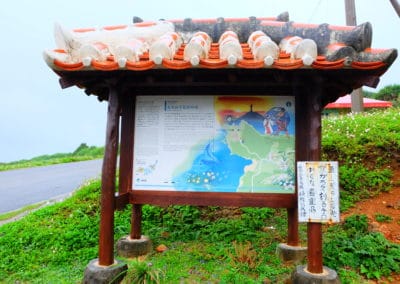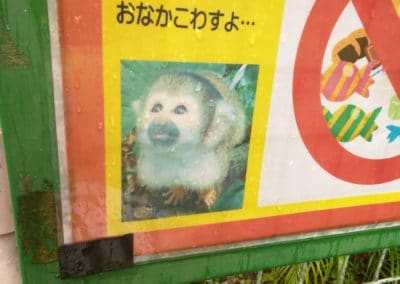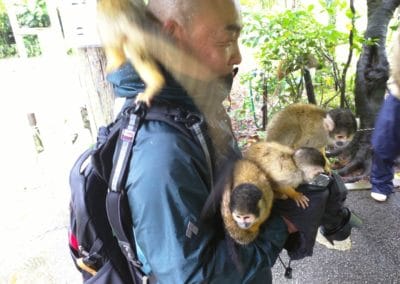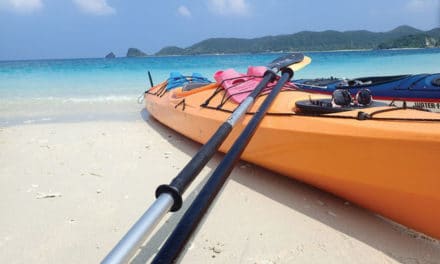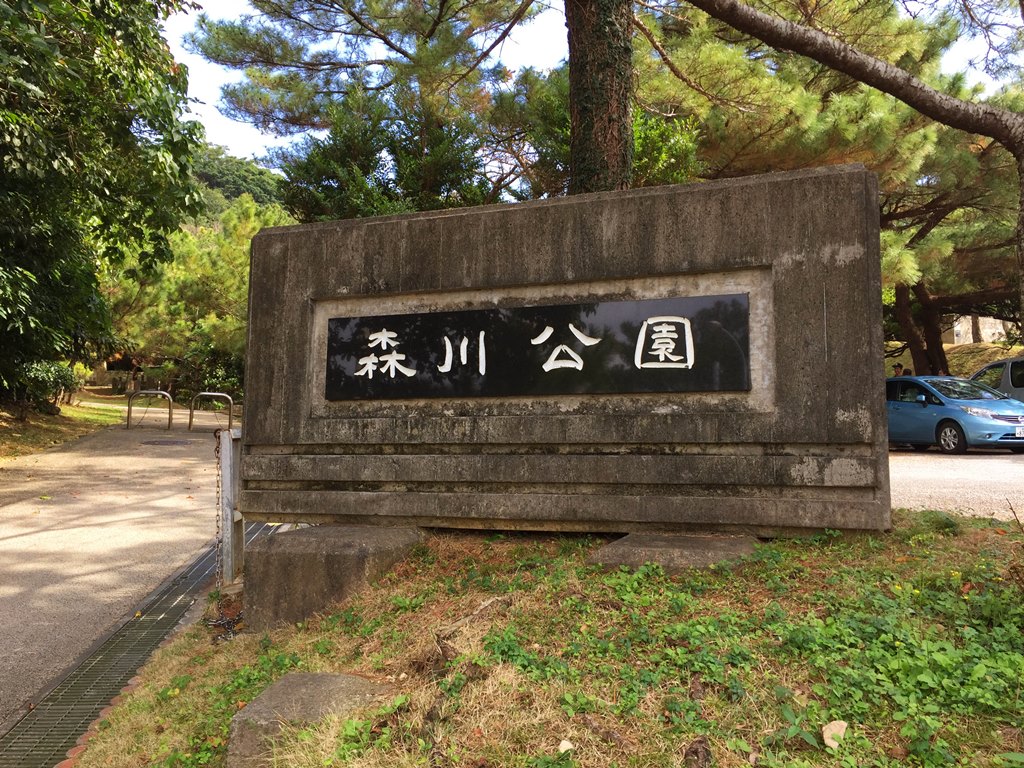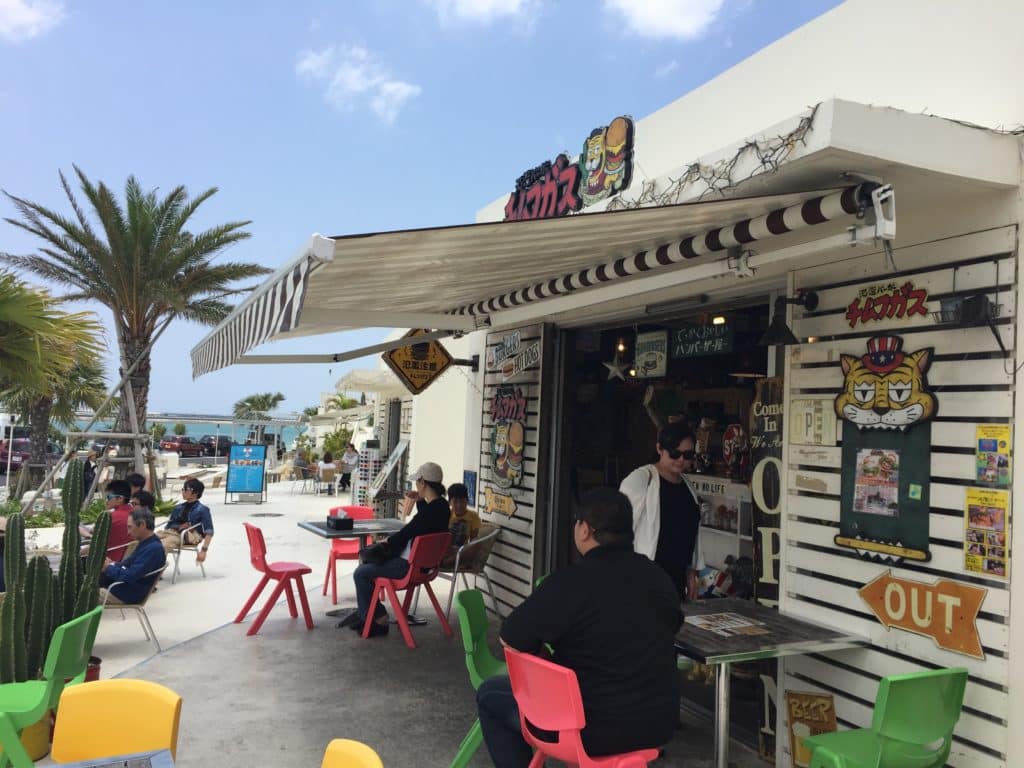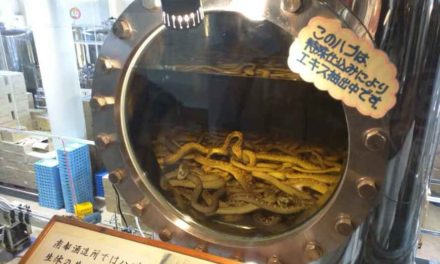During our trip, one of our stops was to the Uganzaki lighthouse which as most lighthouses are, situated close to the edge of a cliff. Uganzaki lighthouse was declared as a scenic beauty site back in March of 1983. The sad history of Uganzaki lies before when it was functioning as a lighthouse. Back in December of 1952, a ferry coming from Naha returning to Ishigaki met with severe inclement weather and a distress signal was sent to the Uganzaki lighthouse which the ferry boat was headed. The ferry ended up capsizing which lead to its ultimate demise. After this tragic event, a statue was built to commemorate the sad souls lost during that day and to pray for the safety of future travelers. Now, the lighthouse is mostly used as a great spot to see the overlooking cliff and to enjoy the bed of evening primrose flowers during its blooming season.
For the next part of our journey, we were curious to see how people lived back in the day on Ishigaki and so we decided to visit a place called Yaimamura. Yaimamura would be the Ishigaki equivalent of Okinawa’s Ryukyu Village. It shows old traditional houses, the way people lived, and just in general how they would operate their day by day. They lived in old wooden houses called kominka which the roof looks like it was made from layers of round clay shingles typical of some houses you see on island. Considering its age, the houses in Yaimamura were surprisingly sturdy. You can even walk inside and experience dancing and singing traditional music together with the local guides.
One of the most interesting parts of the place was their surprise hosts, the squirrel monkeys! (OK Google, what are squirrel monkeys?) These little peaceful beings would just jump out from the trees and land on your shoulder simply to stare at you with puzzled eyes as if to ask, whatcha doing here buddy? We were assured before entering the facility that these monkeys are peaceful as long as you do not threaten them (duh). Once the first monkey determines that it is safe to land, another group of squirrel monkeys will swarm down and land on you. Apparently, they do this sometimes to share your warmth especially during the winter season. Your only savior is when the trainer or monkey caretaker (or as I like to call her, the Monkeeper) comes along and rattles a ball with food inside. In a New York minute, the entire group of monkeys will swarm towards that noise giving you your opportunity to escape. The highlight of it all was that when they were gone, we discovered that one of the monkey’s mischievously left a “treat” on my wife’s camera bag. And no, it was not chocolate.
Although there are many places to go in Ishigaki, I highly recommend you make a stop to these locations. If not for the spectacular view and the immersive culture, at least go to see the monkeys. They are an absolute hoot. The Uganzaki lighthouse is free of charge while the Yaimamura will set you back about 1000 yen per adult. Pro tip: if you rented a car, make sure to ask the car rental place if they offer coupon books to save 20%.
Location Name: Uganzaki Lighthouse (scenic site)
Website: http://www.ishigaki-navi.net/si_uganzaki.html
They accept no yen, $, or creditcard because it’s FREE!
Opening Hours: Doesn’t close. Enjoy the scenery while there is sunlight.
Location Name: Ishigaki Yaimamura (cultural site)
Tel#: 098-082-8798
Website: http://www.yaimamura.com/
They accept Creditcards and Yen only
Opening Hours: 09:00am-05:30pm (Everyday)
![]()

